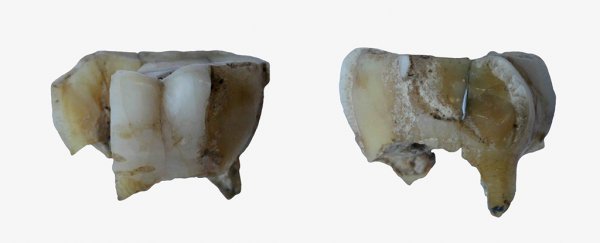It's one of the most fascinating fields in anthropology: how and when did human beings first make it over to the Americas? Thanks to material scraped from a 14,000-year-old tooth found near Lake Baikal in Siberia, we now have more clues.
The tooth has actually been sitting in a museum drawer for decades, but after being spotted as potentially valuable, genome sequencing has revealed DNA that matches the Native Americans of today – a mix of genes from Ancient North Eurasians (ANE) and Northeast Asians (NEA).
Not only is this the oldest DNA link between Native American populations and their ancestors by some 2,500 years, its location is interesting too. It's much further away from Beringia, the land mass that once linked Asia and North America, than previous DNA evidence.
"This study reveals the deepest link between Upper Paleolithic Siberians and First Americans," says biological scientist He Yu, from the Max Planck Institute for the Science of Human History in Germany.
"We believe this could shed light on future studies about Native American population history."
Every new finding is like adding a piece to a bigger puzzle. Researchers know that the populations around Lake Baikal now share very little of this genetic signature, for example, suggesting it got isolated and cut off somewhere around the Beringia region.
The team looked at 19 ancient human genomes in total, observing that the people who eventually settled in the Americas likely came from farther afield than was previously thought, and from a bigger region – the site where the newly analysed tooth was found is 3,200 kilometres (1,988 miles) away from an area where similar genetic material was previously discovered.
It's not clear exactly when people first made the trip over to the Americas, but we now know more about where those people came from, and how they mixed together. Previous research has hinted that it may not have been a huge group who made the trip.
"One surprise – from a genetic standpoint, not from an archaeological one – is that Southern Siberians are a more likely source of Native Americans than Northeast Siberians," archaeologist Ben Potter from Liaocheng University in China, who wasn't involved in the study, told Gizmodo.
"We now have genetic data to suggest that Native American-related groups were widespread in northeast Asia after the last ice age."
 The Selenga River, close to the Lake Baikal archeological site. (G. Pavlenok)
The Selenga River, close to the Lake Baikal archeological site. (G. Pavlenok)
Another discovery noted in the study is the presence of the Yersinia pestis bacterium in two individuals buried around 4,200 years ago. Y. pestis causes the plague in humans in its various forms, but has never been found this far east this early in history before.
That might mean we need to rethink just how mobile society was and how much pathogens moved around in the Bronze Age. The bacteria look to have spread from Europe to Siberia over the course of just 100 years or so.
From Native American ancestry to plague spreading, there's plenty here to prompt further research into some of the biggest mysteries of our past – not least who got to America first and how they made the journey.
"The Upper Paleolithic genome will provide a legacy to study human genetic history in the future," says anthropological scientist Cosimo Posth, from the Max Planck Institute for the Science of Human History.
The research has been published in Cell.
